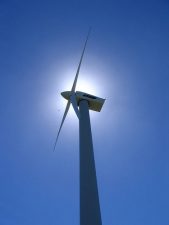Below are five broad areas that can be addressed when it comes to lowering the obstacles, which lead to the stimulation of renewable investment.
Transparent and regulated power arrangement. It is important to establish policies that are transparent and predictable because it is going to provide confidence to investors because they believe they are going to recover the investment they have made in power generation. Some examples of these policies include allowing independent power produces (IPP); having standardized and bankable power purchase agreement templates; having fair rate and transparent adjustment and public participation; holding transparent auctions. There was a recent transmission line auction in Brazil that didn’t attract investors after being launched in 2016 that is the perfect example. They revised the terms that included a tariff revision formula based on long-term interest rates and inflation, and higher maximum tariffs encouraged many investors to participate.
Clean energy or climate incentives. When there is an integrated and multi-year approach with short-term targets for reducing fossil fuel plants, and investing more in renewable energy, it makes it easier to come up with good policies. Establish carbon-pricing mechanisms like a carbon market, and also legislation to do with carbon removal is going to help a lot. A good example is Chile. They first started with passing a decommissioning schedule for coal power plants and then they engaged with the private power plant owners to come up with a schedule to phase out coal. They then had a tax on carbon for coal-powered plants.
Measures that are good for businesses. There are some policies that can help push investment in renewable energy that isn’t even specific to energy. Some of these include tax policy (this is where they don’t charge VAT on clean power sales or withholding taxes on profits), improved permitting processes, allowing foreign direct investment, and letting foreign investors repatriate profits.
Good financing mechanisms. It is important to have innovative financing mechanisms so that it mitigates risks, which offers higher return potential or create more opportunities to invest in. The masala bond is a good example of a finance mechanism that helps with risk mitigation. These are Indian Rupee-dominated bonds that allow foreign countries to invest in India. It mitigates the risk by providing a currency hedge. The project’s return and the cost of financing can be tied to the achievement of the decarbonization target. According to The European Smaller Companies Trust, European Bank of Reconstruction and Development invested €56 million in a bond offered by Tauron Polska Energia with the total bond being €233 million. The financing costs will end up going low if they meet the 2030 decarbonization objectives.
There are some financial innovations under consideration that will help in creating more renewable energy investment opportunities. Some examples include;
The synthetic corporate power purchase agreements (CPPAs) offer hedges against fluctuation in power costs for the buyer and also provide demand for renewable energy.
Energy transition mechanism that gives investors a chance of buying high-carbon emitting assets then retiring them and replacing them with renewable energy (the financial returns from this will come from the operation of high carbon and renewable-energy assets that is supplemented by things like carbon credit for faster retirement). The WEF has a task force that is working to come up with operational details on these innovations.
Early risk assumption. Many projects that have succeeded had an early investor who was ready to take the risks. Once the risks concerning the project had been ameliorated, the sponsor then found it easy to get more and less expensive capital for the project. A good example of such a project was the BTG Pactual transition project mentioned above. The company took the full equity risk at the start but managed to get debt financing once the project was done. The role can be supplemented or even fulfilled by international development organizations. InfraCo Asia is a good example of this approach where Asia GDP growth has been recorded. They were involved in a smart solar network in the Philippines where they only supported the first 4,000 homes although the project was targeting 200,000 homes for this clean energy project. They later managed to find another investor.
What is WEF doing to encourage clean energy?
The above five areas are associated with the government. It is important for governments in emerging economies to come up and enact legislation that is going to help in ameliorating some risks and improving returns on energy projects. Making Green loans available to encourage clean energy is a step that many governments have chosen. They need to request international financial institutions and multilateral development banks to raise their risk financing capacity and risk instrument offerings. The government needs to work with the private sector to come up with goals and parameters for investment opportunities in the renewable energy sector. They should be receptive to any financial innovations that can result in more private foreign capital flowing in to be used for clean energy projects. For governments in developed economies, they need to commit to mobilizing more funds for such projects and also provide technical advisory assistance.
Governments from both developing and developed economies should act fast because of the need to invest in low-carbon energy. The actions being taken in this decade are going to have a big impact on emissions for decades to come, or they can help fulfill SDG.




